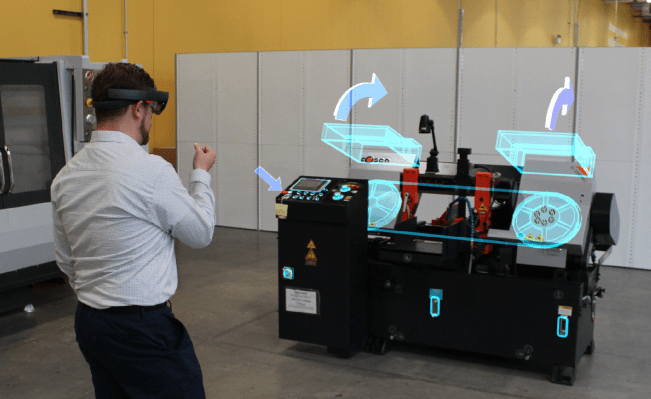Microsoft’s $3,000 HoloLens dev kit has gathered more attention over the past couple years than a lot of consumer products, but it’s important to remember that the augmented reality headset’s ambitions lie in building a new standard for spatial computing with enterprise customers.
Today, Alberta-based Scope AR announced that it will be launching a version of its WorkLink augmented reality content authoring platform on the HoloLens, giving customers the ability to help remote workers learn to repair or assemble complex machinery.
The YC-backed startup builds tools which allow workers to see CAD models overlaid on real world objects (while getting live support from specialists), giving them the ability to easily see when there’s an issue while also being able to deliver quick fixes. Most of this work is done on tablets using marker-based tracking, but the company is increasingly looking towards the headset-based future of AR.
The company has been quietly building an impressive list of customers since its founding in 2010. Most can’t be publicly disclosed because of contracts, but Scope AR has acknowledged its work with organizations like NASA, Boeing, Lockheed Martin and Toyota.
One of the issue with HoloLens is that it really isn’t the easiest piece of hardware to get content onto. For developers, it isn’t as simple as pressing a HoloLens button in Unity, there’s some technical heavy-lifting required.
The company’s WorkLink product will be able to utilize the HoloLens’ outward facing depth sensors to map a rough mesh of objects and attach AR step-by-step instructions to the real-world objects with “the same ease as creating a PowerPoint presentation,” according to the company. This will allow non-technical employees a chance to easily build content and push it out to supported platforms, including iOS, Android and Windows.
“This is going to be the easiest way to get content onto the HoloLens,” Scope AR CEO Scott Montgomerie tells TechCrunch.
